According to the 2011 Census, Pimpri Chinchwad (PCMC) had a population of about 17 lakh. This is projected to rise to nearly 42 lakh by 2031 and 61 lakh by 2041, as per the Draft Development Plan. As one of Maharashtra’s largest urban centres and a key satellite city, Pimpri Chinchwad is set to become one of the fastest-growing cities in the country. In this exclusive interaction, Shekhar Singh, IAS, Municipal Commissioner, PCMC, explains to Anannya Saraswat, Reporter (Public Sector & Leadership) at APAC Media, how the administration is preparing for sustainable growth while keeping pace with rapid urbanisation.
PCMC’s Draft Development Plan 2041 envisions a city of 61 lakh residents. Could you elaborate on the key elements of the plan? How is PCMC planning to address this rapid pace of urbanisation and population growth in the city?
The 2041 development plan acknowledges that the city is already experiencing rapid growth. If you examine the census data between 2001 and 2011, the pace of growth was very high, and this trend has continued in the years since. By 2041, we expect about 61 lakh people in the city.
The most important factor here is land use planning, which is crucial for a city growing at this speed. The plan looks at where employment opportunities are located today, where they are likely to grow in the future, and how these intersect with transit-oriented development. Based on this, land use has been structured to ensure balanced and sustainable growth.
Some of the major components of the development plan are as follows:
Roads and Transportation – For the first time, we have integrated the Comprehensive Mobility Plan (CMP) for the Pune Metropolitan Region with our development plan. This allows us to coordinate with agencies like Maha Metro and plan effectively for metro corridors, BRTS routes, inter-bus terminals, and private/public transport integration.
For example, the metro currently runs from Swargate to PCMC and is being extended to Nigdi (Bhakti Shakti). Beyond this, a 42 km corridor is planned to connect Nigdi to Wakad, Nashik Phata, and Chakan. This will link key economic hubs such as the automobile cluster in Chakan, the IT parks in Hinjewadi, and Talawade.
Land Development and Zoning – In areas that were earlier agricultural but are now under urban pressure, land has been converted into residential zones. At the same time, we have protected sensitive ecological areas, especially riverbanks, by creating green buffer zones.
Another important step is the creation of three central business districts (CBDs) in Punawale, Chikhli, and other identified growth points. The idea is to create employment hubs within the city itself, much like how Bandra-Kurla Complex (BKC) transformed Mumbai.
Physical Infrastructure – We have ensured that master plans for water supply, sewerage, and stormwater management are integrated with the development plan. Provisions have been made for securing water sources, laying pipelines, building treatment plants, sewage treatment plants, and pumping stations, keeping in mind the requirements up to 2041.
Road Networks – In addition to roads identified under the CMP, the plan also includes a strong network of radials and ring roads. These will integrate with the proposed outer ring road, which is vital for the Pune metropolitan region.
Urban Greens and Recreation – Quality of life depends on accessible green and recreational spaces. The plan includes a three-tier system: city-level parks, zone-level parks, and neighborhood parks.
Similarly, we have proposed four large city-level sports complexes of 20–25 acres each, along with zonal and neighborhood-level facilities. This ensures people have access to sports and recreation within short distances from their homes.
Housing and TOD Policy – Transit-Oriented Development (TOD) forms the backbone of our housing strategy. By focusing housing around metro and BRTS corridors, we can reduce travel times, encourage the use of public transport, and improve overall livability.
Disaster Management – As rapid urbanization increases disaster risks, the development plan includes a dedicated mitigation plan and disaster-resilient infrastructure to make the city more prepared for emergencies.
Riverfront Rejuvenation – All three rivers in the city (Pavana, Mula, Mutha) are being given special attention. We have reserved green buffer zones along their banks, which will not only act as ecological safeguards but also serve as spaces for recreation and riverfront development.
The development plan integrates mobility, housing, water security, drainage, green spaces, economic hubs, disaster preparedness, and river rejuvenation into one vision. It is designed to ensure that Pimpri Chinchwad grows sustainably while remaining livable for its citizens in 2041.
What are the key initiatives undertaken for waste management in the city?
Over the past seven to eight years, we’ve put a renewed focus on both solid waste and liquid waste management.
For us, there are a few critical parameters when it comes to waste management:
Door-to-Door Collection- We ensure 100% door-to-door collection across all 32 wards of the city. Around 540 GPS-enabled vehicles are monitored daily through the Smart City ICCC (Integrated Command and Control Center). Routes are fixed, and we track vehicles in real time. One major reason for waste piles in some cities is irregular collection. By ensuring vehicles arrive on time at specific locations, we prevent that problem.
Segregation at Source- Segregation is perhaps the most critical step. It’s widely accepted now that the best optimization comes when waste is segregated at the source. To strengthen this, we’ve engaged trained social workers as IEC (Information, Education, Communication) staff. They work alongside waste collection teams to educate households and communities on the importance of segregation, identify areas where compliance is low, and provide additional support where needed.
Scientific Waste Processing- Collection alone isn’t enough unless waste is processed scientifically. PCMC has developed strong integrated facilities for this:
- Waste-to-Energy Plant: We have Maharashtra’s first waste-to-energy plant, inaugurated by the Hon’ble Prime Minister about a year and a half ago. It generates 14 MW of power by processing about 700 tons of dry waste per day. This electricity powers key city infrastructure like sewage treatment plants (STPs), a major hospital, and the main water treatment plant. Out of the city’s total 54 MW electricity demand, 14 MW comes from this waste-to-energy process, making it a vital part of our circular economy.
Importantly, the plant uses treated STP water (3 MLD daily) instead of potable water, and the bottom ash generated is used in our construction and demolition (C&D) waste facility to produce paver blocks and curbstones. - Wet Waste Management: Wet waste is converted into compost, which is used by our horticulture department and also given to farmers in nearby rural areas.
We’ve also set up a 50 TPD hotel waste-to-biogas plant, producing 2.2 tons of biogas daily. This gas is blended directly into the MNGL pipeline, making PCMC the first corporation in Maharashtra to achieve this.
Building on this success, tenders are out for a 375 TPD compressed biogas plant, which will be one of the largest in India. Wet waste composting has its limits, so large-scale biogas is the way forward. - Future Expansion: We’re setting up a 27 MW waste-to-energy plant (second phase) and a 300 TPD biochar plant to process garden and organic waste. Biochar can be blended with coal for thermal power plants.
Citizen Engagement- No waste management system works without active citizen participation. The Hon’ble Prime Minister has emphasized “Jan Andolan,” and we’ve seen its impact. PCMC has steadily risen in the Swachh Survekshan rankings—from 47th to 26th, then 19th, then 13th, and this year, 7th in India. We’re confident of breaking into the top rankings soon.
Street Sweeping and Cleanliness- Clean roads are also an important part of solid waste management. In PCMC, roads that are 18 meters or wider are cleaned with 32 mechanical sweepers. Smaller roads are cleaned manually by the staff. This mix ensures safety (since high-traffic roads are not manually swept) and consistent cleanliness. We also work closely with our safai mitras and karamcharis to maintain the city’s hygiene.
Liquid Waste Management- PCMC currently treats about 80% of the liquid waste generated in the city.
We have already prepared a drainage master plan aligned with the 2041 development plan. However, we will execute it in rolling three-year phases. This ensures that new STPs are ready before demand outpaces capacity. This proactive approach will ensure that we never fall short in sewage treatment.
How are emerging technologies being used in the development of the city right now? More importantly, how are they being used in ways that benefit citizens directly—for service delivery and accessibility?
Emerging technologies are indeed critical, but before we even talk about frontier tech, we have to acknowledge something basic: in our country, sometimes we still struggle to provide even the simplest online facilities to citizens. Our Hon’ble Chief Minister has been very clear that every service we deliver should also be available online.
PCMC is taking strong steps in this direction:
SmartSarthi for Grievances- We launched SmartSarthi, an integrated grievance redressal platform that combines all modes of complaint registration—phone calls, web portal, and mobile app. All complaints flow into a single system, making it easier for citizens to lodge grievances and for the corporation to act on them. Earlier, our average grievance resolution time was 16 days. By using data analysis and machine learning, we’ve brought it down to 10 days. The system also classifies complaints correctly using LLM-based models trained on 3.75 lakh past grievances, reducing misallocation and improving efficiency.
Predictive Maintenance through Data- Instead of just reacting to complaints, we now predict them. For instance, data showed that 75% of drainage complaints came from just four areas. That helped us shift resources for preventive maintenance, reducing daily complaints. Similarly, streetlight complaints are tracked to fix accountability on contractors, ensuring better service delivery.
Property Tax Collection Transformation- Technology has transformed our property tax collection system. Collections rose from Rs 626 crore in 2022–23 to Rs 970 crore in 2023–24—a 59% jump in two years. The first step was cleaning and standardizing our data. We partnered with 400 self-help group women who delivered bills and simultaneously updated parameters like phone numbers, addresses, and geo-coordinates through a mobile app. In one month, 6.5 lakh bills were delivered, 2 lakh mobile numbers updated, 80,000 addresses corrected, and 1.25 lakh properties geo-tagged. This clean dataset helped us run targeted campaigns and even shift 1.15 lakh taxpayers from Q4 to Q1 payments, doubling early revenue collection.
Drone Mapping and GIS Integration- We used drone technology to map the entire city and integrated this with our GIS-ERP system. Every property was assigned a unique property ID. This helped us identify 0.7 lakh unrecorded properties and bring them into the tax net, ensuring fairness and boosting annual assessments.
GIS-Based ERP Platform- One of our biggest achievements is the GIS-based ERP platform, which overlays all operational data—tax, complaints, utilities, roads, and more—onto geospatial maps. This is not just a visualisation tool but an integrated decision-making engine.
For example, if a drainage complaint is registered, the system can immediately show the exact property ID, the road network around it, the contractor responsible for maintenance, and even nearby complaints of a similar nature. This means faster and more precise action.
For revenue, it ensures that property tax records are tied to actual mapped locations, leaving little room for error or evasion. For urban planning, it helps us see where new roads, schools, or hospitals are most needed based on population density and service gaps.
In many ways, this platform acts as a ‘digital twin’ of the city, where every administrative decision can be tested against live data. Very few municipal corporations in India have deployed GIS at this scale, and it’s transforming the way we govern.
City Hub for Data Communication- Learning from these successes, we launched a broader City Hub for Data Communication (CHDC) Project about seven months ago to integrate data across eight departments, including property tax, grievances, health, and education.
The process involves cleaning and standardizing data, building a city-wide data lake, and enabling cross-department queries. The goal is to move toward predictive and inferential analysis that makes decision-making more data-driven. The impact is already visible. In education, all MIS data has been brought onto a single platform, allowing teachers to spend less time filling forms and more time teaching. In health, we are integrating hospital and PHC data to strengthen service delivery and planning.
While the project is still a work in progress, the potential for improving governance and efficiency is immense.
Integration with Gati Shakti- We have also integrated our initiatives with the Gati Shakti initiative of the government of India, which is about aligning infrastructure planning across sectors. Instead of working in silos, we now coordinate road works, pipelines, streetlight networks, and other utilities in a unified manner. This prevents duplication, saves costs, and reduces inconvenience for citizens.
Paperless Governance- Another priority for us is going completely paperless. Whether it is building permissions, licenses, or citizen service requests, we are digitising end-to-end processes so citizens do not have to submit physical files or make repeated office visits.
Could you talk about the different kinds of partnerships PCMC is pursuing, both with civil society and with the private sector? How are these partnerships shaping the city’s development?
Partnerships with NGOs and Civil Society
We are working closely with organizations that help us strengthen service delivery in social sectors like health, education, and skilling.
With UNICEF, we are creating a Ward Health Action Plan that places greater emphasis on preventive and primary health care, which became a priority for all of us after COVID.
In education, we have tied up with the Akanksha Foundation and the Quality Council of India. The latter has assessed nearly 58,000 students through pre- and post-academic evaluations in the last two years, giving us insights into student and school-level performance. Based on this, we can intervene where learning outcomes need attention. We’ve also introduced measures like SMS alerts to parents if their child is absent, systems that were earlier seen mostly in private schools.
For skilling, we are running twelve Lighthouse centers in collaboration with the Lighthouse Foundation and with support from the Michael and Susan Dell Foundation. These centers aim to train and place about 35,000 youth over the next three years through a mix of foundation courses, upskilling, and direct industry linkages.
Public-Private Partnerships
Alongside civil society, private sector partnerships are equally important because they make our development plans financially sustainable.
A strong example is our operational waste-to-energy plant, which runs on a PPP model. We provided land and viability gap funding, and we buy back electricity from the private partner. The upcoming 27 MW waste-to-energy plant with a biochar unit will follow the same structure.
Another unique PPP is the ‘Waste to Wonder’ garden, which displays 15 world wonders created from waste materials—both PCMC and the private partner invested in making this project possible.
Through the Smart City project, we laid about 700 kilometers of optical fiber network, and now we have been able to monetize it with a private partner. From this monetization, we expect to earn at least Rs 30 crore annually, making us one of the few smart cities with a sustainable revenue model.
We are also working on a PPP project for the reuse and recycling of treated water from our sewage treatment plants, starting with a 100 MLD project.
What are the immediate priorities for PCMC over the next two to three years, especially in terms of infrastructure, sustainability, and environmental concerns?
Like all Indian cities, no matter how much technology we bring in, the core “bread and butter” requirements remain the same—roads, water, and sewage. Our biggest focus will be on ensuring these basic services, particularly in the newer and rapidly growing areas of the city.
We want to stay ahead of private development rather than play catch-up, something PCMC has managed well in the past. The pace of growth is much faster now, but we are determined to keep up by laying new pipelines, building roads, and expanding sewerage networks in the new zones.
Another pressing priority is traffic congestion, which has begun to affect us like other Indian cities. We are placing a strong emphasis on public transport, especially our BRTS system. PCMC has already developed six BRTS corridors, carrying about 25 percent of all bus passengers in the Pune Metropolitan Region, and we are expanding with two more. We are also rapidly increasing our bus fleet in collaboration with the joint bus company we run with PMC.
Alongside this, we are pushing for sustainable mobility—better walking infrastructure, safe footpaths, and cycling tracks. Just two months ago, we issued India’s first green municipal bond, worth Rs 200 crore, to fund our Harit Setu project. This initiative will saturate neighborhoods with safe cycling and walking paths, making last-mile and first-mile connectivity practical. Our pilot project in Nigdi-Pradhikaran will deliver 42 kilometers of such infrastructure, complementing existing BRTS services and the upcoming Metro line. This ties into our broader vision of a “Fifteen-Minute City,” where people can meet most of their daily needs by walking or cycling within their neighborhoods.
Sustainability and climate resilience are equally important priorities. We are investing in river rejuvenation projects funded through municipal bonds, which will help with flood protection and ecological restoration. At the same time, we are preparing for extreme rainfall events by adopting the “Sponge City” concept, first implemented in China and now in use across Europe. The idea is to make urban areas more absorbent to reduce flooding risks. Cities like Chennai have made good progress on this, and we are adapting international best practices to our context. Along with this, we are implementing policies on parking and street vending to better manage urban space.
Our focus for the next few years will be threefold—strengthening core infrastructure in new growth areas, addressing traffic congestion through public transport and sustainable mobility, and embedding sustainability into our city planning.







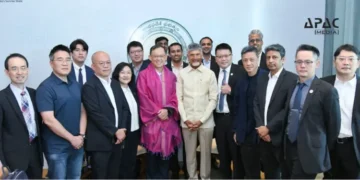








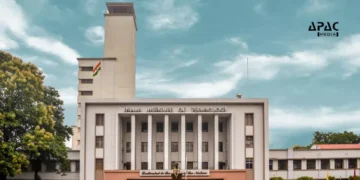





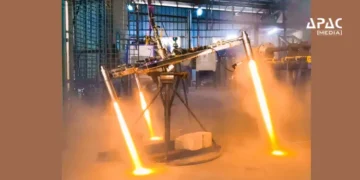

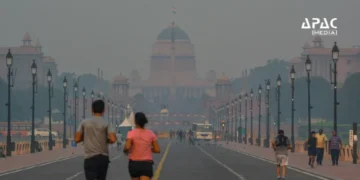


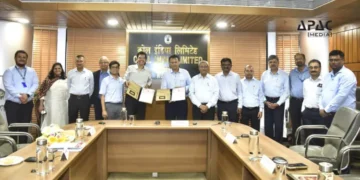
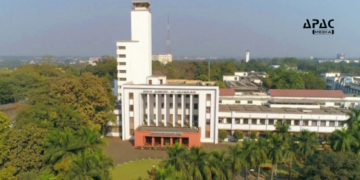
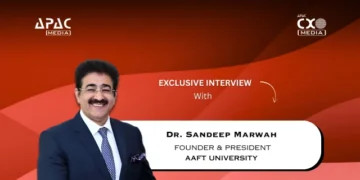
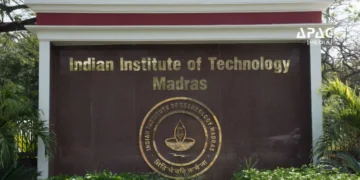
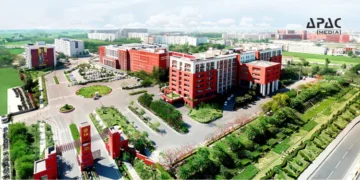
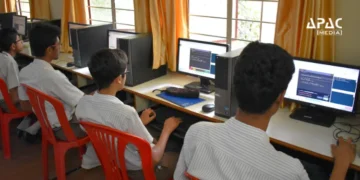
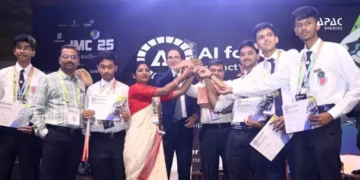



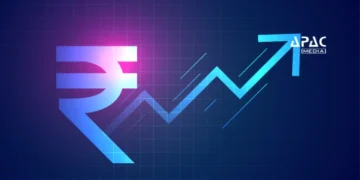


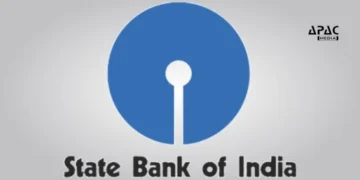




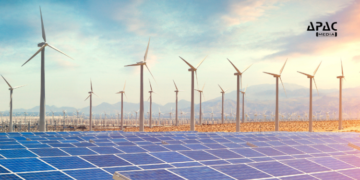

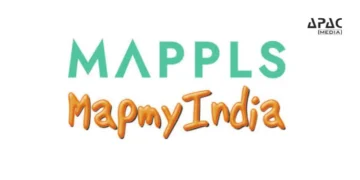















Discussion about this post